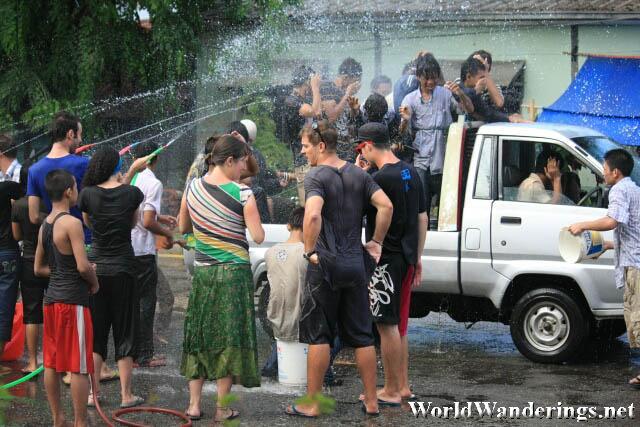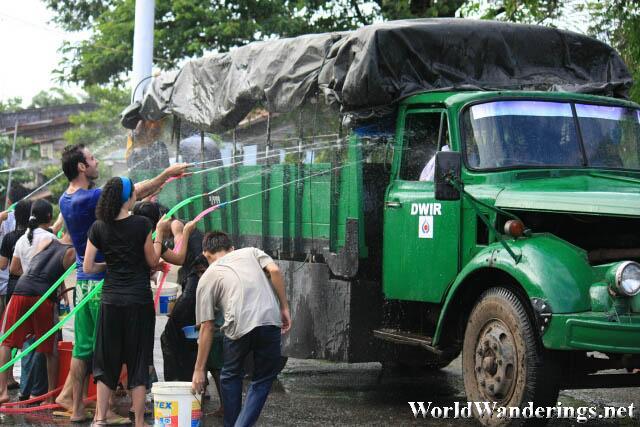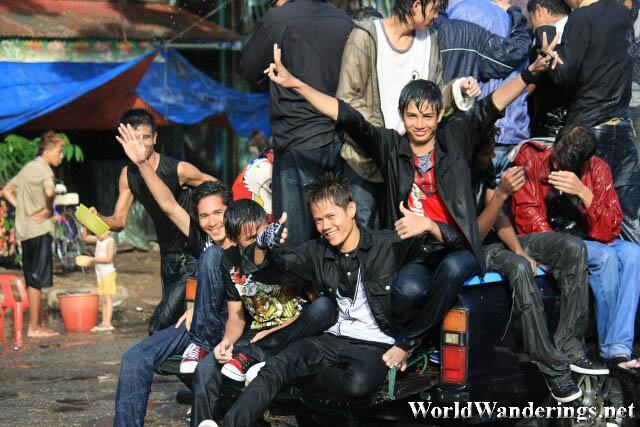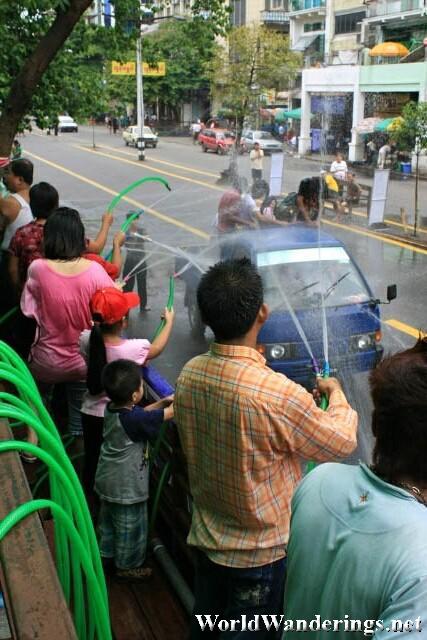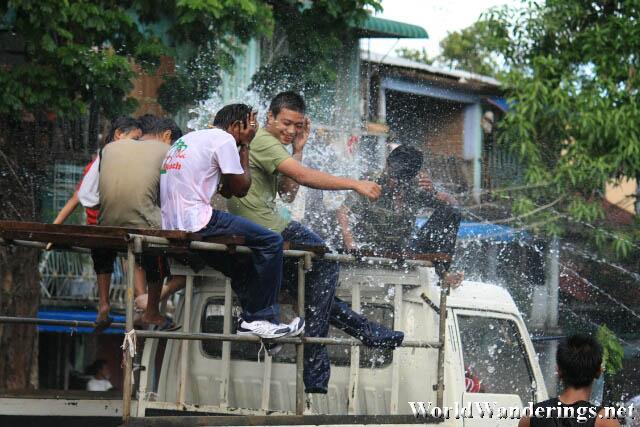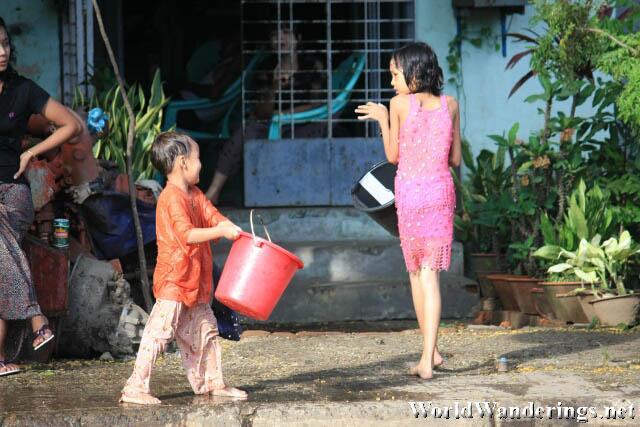The Burmese festival of Thingyan has been nothing but trouble for me. It was because of this festival that I needed to shorten my trip here in Myanmar, since I won’t be guaranteed a seat on the way back to Yangon after the festival since everybody might be heading back to Yangon by that time. It is also because of this festival that I needed to crisscross the streets of Yangon to avoid getting drenched by triggerhappy Burmese. But what is Thingyan anyway?
Thingyan is the Burmese New Year Water Festival. Water festivals are also celebrated in the neighboring countires of Laos, Cambodia and more prominently Thailand where it is known as songkran. Surprisingly, Thingyan is of Hindu origin. However, the Burmese have incorporated this festival into their own culture and celebrate it with a lot of enthusiasm. I didn’t really get to see much of the religious side of this festival since it involves a lot of temple visiting and dodging of water. What I was exposed to, literally, was the Water Festival which practically the entire country celebrates.
The traditional way of using water during Thingyan was to sprinkle people with water to “wash” away the sins of the past year. In true Burmese fashion, this was extended to hosing total strangers down with gallons of water. The stages or mandats are normally set up along main road with hoses attached to them. Vehicles usually open top pickups will stop by the stages and have the passengers drenched in water. Thingyan usually lands on April and is normally the hottest month of the year in Myanmar, so the drenching is also welcomed by the people, most of the them.
The citizens of Yangon would cruise all over the city on the pickup trucks just to get drenched, ladies would obviously need to bring along a towel because of the drenching. The Motherland Inn II also has its own drenching station, although there is no stage, people would just stand along the road waiting for their willing victims. This was all very amusing to watch since even the staff of the Motherland Inn II would join in the drenching. The guests are all more than willing to join in the fun. Being the photograher, I kept my distance and my clothes dry, although once in a while a kid might try to splash me with some water. Just hope that kid’s parents can pay for my wet camera.
Apparently, the Burmese have perfected the art of drenching people. There is the standard hosing of people with a colorful garden hose. Sometimes entire pails will be emptied onto willing revelers. Women will have water gently poured on their backs, the men do not get such preferential treatment. Other kids have started slamming a basin of water onto victims. This can be quite painful and victims would quickly give the kids an angry look whenever this happens. This powerful slamming of water can also happen to motorcyclists, with potentially disastrous results. I don’t know how many people get hurt during this festive season but in my three days here in Yangon, I already witnessed one serious accident involving Thingyan.
Dangerous or not, the celebration continues throughout the day. The city definitely spends a huge amount of water during this time but I guess water is not really a big problem for them. For all the conservatism I have seen during my travels around Myanmar, everyone seems to cut loose during Thingyan. With Burmese translations of old, campy American pop songs blaring throughout the city, it is hard not to be taken in by the merriment. Afterall, how often do you get to hose a total strange down and get away with it?
[xmlgm {http://www.worldwanderings.net/kml/MotherlandInnII.kmz}]
